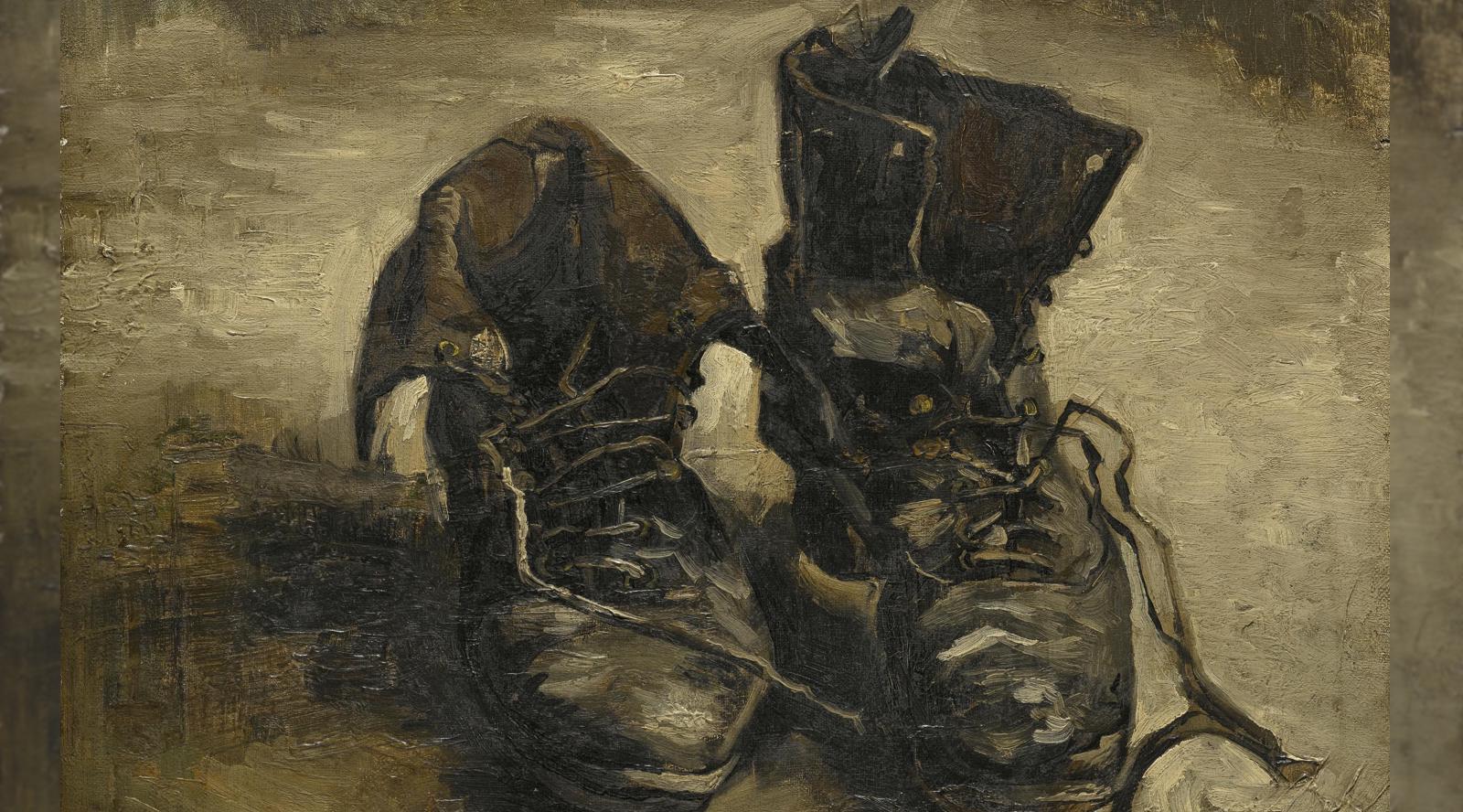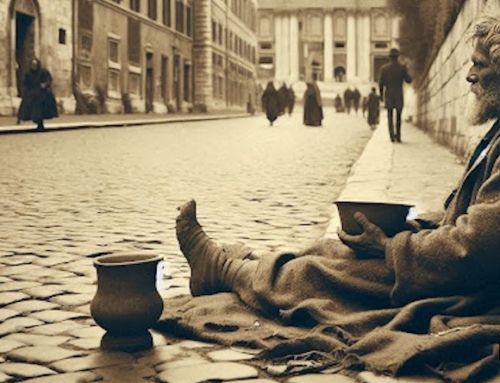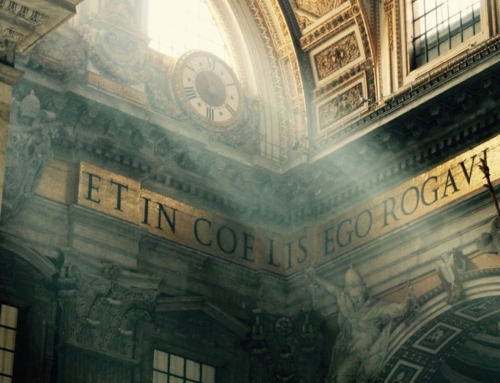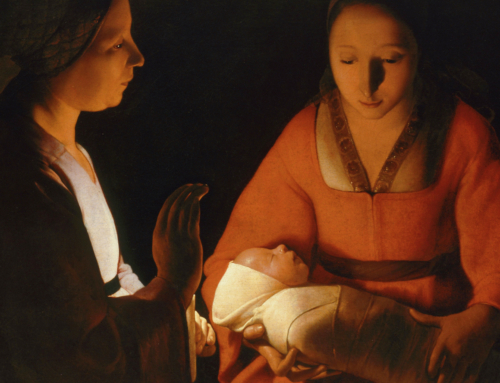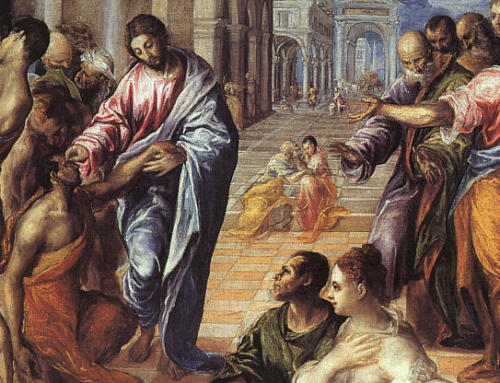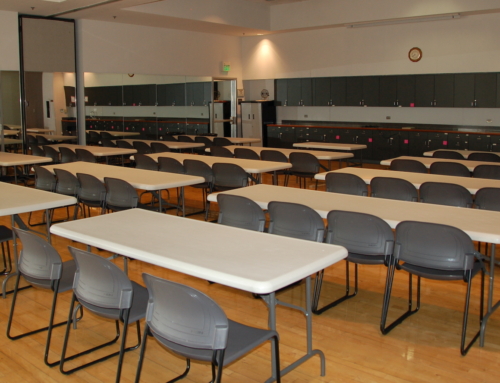Forma Vitae: An Essay on the Dominican Life
A “forma vitae” essay is meant to convey something about the “form of life” that we, as Dominican friars, live in virtue of our religious vows. Each “forma vitae” essay should provide accessible, insightful, and revealing commentary about the Dominican life and vocation. Other “forma vitae” essays can be found here.
When a Dominican friar looks down at his shoes, they should look different. I don’t mean they should look different than other people’s shoes. I mean they should look different from each other. When I look around at the shoes of my brothers, the right is noticeably rougher than the left: leather softer, creases deeper, sole often cracked in half. No amount of shoe polish can hide the difference. But why?
Saint Thomas might help: “It seems that God ought to be worshiped not only by internal but also by external actions” (ST II-II, q. 81, a. 7, s.c.). To pay God reverence with our bodies subjects our bodies to our minds, reminding us of the high dignity with which we have been endowed. In turn, bodily worship subjects our minds to God, reminding us of who endowed us with such dignity in the first place. And on top of all this, the religious—who lives under a vow to God—has the immense duty and privilege of turning every action done in love into an act of worship. So, when the religious genuflects—as he or she does dozens of times a day—each drop of the right knee and bend of that right foot is an homage to the One who, upon creating man, found creation “very good” (see Gen 1:31). The worn out shoe becomes a sign of gratitude to God for the wonderful order of the universe.
At this point you might be thinking, “What’s this guy talking about? I’m here for the discount on shoes.” Be patient.
God desires our worship, but not because it lowers us, “putting us under his shoe” so to speak. Rather, he makes “people subject to us, nations under our feet” (Ps 47:4); He, who, in our defense, will cry out to our enemies, “On Edom I hurl my shoe” (Ps 60:8). God desires our worship because it reflects our love. It is the way we express our trust that the Lord will indeed fight our battles for us, and win. When the Dominican is first clothed with the habit and again when he professes his vows, he puts his face to the floor, to the shoes of his superiors if you will, and he is asked a question: “What do you seek?” His answer is full of the abandon such an open-ended question invites: “God’s mercy, and yours.” Where the shoes of God’s will are planted, there he will find true happiness. Then begins the task of trying to fill them.
But how? We may ask: Did God Incarnate even wear shoes? John the Baptist evidently expected him to. But all the preaching, teaching, and healing done on the shores and shallows of Galilee would seem to render shoes burdensome—and soggy. On the other hand, the streets of Jerusalem would seem to necessitate proper footgear. Still, we do not read about the sinful woman removing Jesus’ shoes before anointing his feet. Nor did the soldiers cast lots for Christ’s footwear. Perhaps Christian art might tip the scale for us. In the icon of Our Lady of Perpetual Help, the Infant Christ is shown with his sandal hanging off his right foot, emblematic of the haste with which he flees to his Mother’s arms at the sight of the instruments of his Passion. Far greater than our shoe-ruining homage, the Son’s loving sacrifice to the Father on our behalf—his death—does more than wear out his soles: it knocks them straight off. Turning to the opposite end of our Lord’s earthly sojourn, you’d be hard-pressed to find a painting of Christ ascending to heaven with feet clad. Rather, Jesus goes away barefoot. I would hesitantly conclude, then, that the Son of Man opted not to wear shoes.
We must all reflect on how we will tread the earth—with pristine slippers that have never been scuffed up? Saint Dominic desired his sons to wear shoes so as to have “feet shod in readiness for the gospel of peace” (Eph 6:15), so Dominicans will leave the slippers aside. The consecrated religious cannot afford to keep his shoes in just-out-of-box condition when the Master himself never even cared for them. Work needs doing: in the apostolate, but first in the chapel. Holiness takes time and the willingness to bend that foot daily. However, to borrow a formulation of Saint Paul, we who wear shoes must act as though we were not wearing shoes (see 1 Cor 7:29). Somehow, our shoes represent a kind of barrier between us and God; like Moses being commanded to remove his shoes (see Exod 3:5), we, too, are meant to worship as those who first walked barefoot with God in Eden, in perfect friendship. But, in the era of the Redeemer, God now removes our shoes himself—he who “began to wash the disciples’ feet and dry them with the towel around his waist” (John 13:5). If our worship is meant to reflect our love, then Jesus sets the standard of love in lavish fashion. And as God does, so must those vowed to him—friars, nuns, and sisters alike—do as well.
So, yes, there will be a sale going on: get your shoes 100% off—literally. It’ll be in heaven, where even the religious will experience the refreshing sensation of air blowing across his feet. Footwear will pass away, along with the earth and seas. But, before that time when we can kick off these old shoes, the cobbler needs to earn his daily wage. The shoe must be worn down, being about the Lord’s business. See how worn you can make your right shoe—you won’t want to miss the benefits.
Promo Code: 1805
✠
Image: Vincent van Gogh, Shoes

